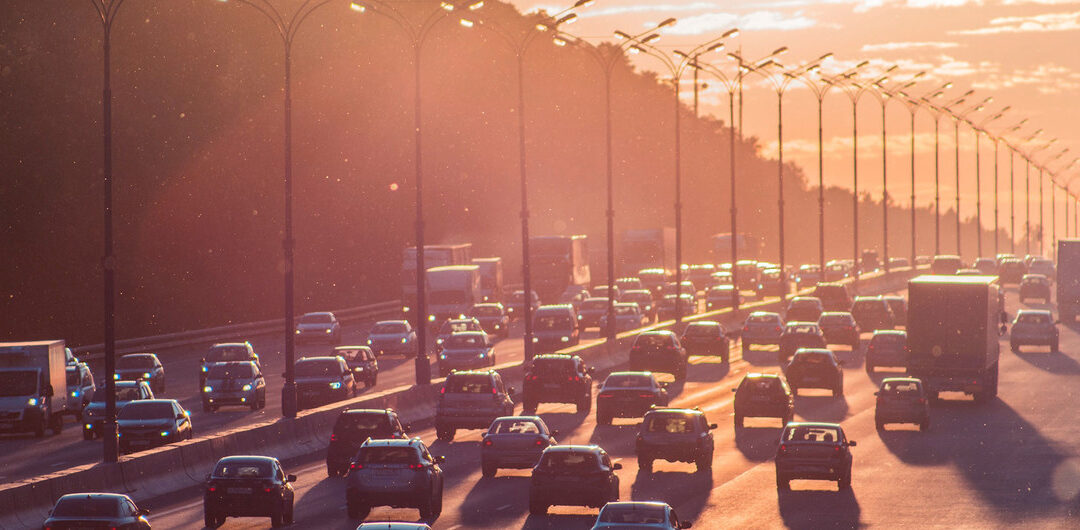India’s overall pollution levels worsened in 2021 and New Delhi remained the world’s most polluted capital, the data showed. Bangladesh was the most polluted country, also unchanged from the previous year, while Chad ranked second after the African country’s data was included for the first time
SHANGHAI:
Not a single country managed to meet the World Health Organization’s (WHO) air quality standard in 2021, a survey of pollution data in 6,475 cities showed on Tuesday, and smog even rebounded in some regions after a COVID-related dip.
The WHO recommends that average annual readings of small and hazardous airborne particles known as PM2.5 should be no more than 5 micrograms per cubic metre after changing its guidelines last year, saying that even low concentrations caused significant health risks.
But only 3.4% of the surveyed cities met the standard in 2021, according to data complied by IQAir, a Swiss pollution technology company that monitors air quality. As many as 93 cities saw PM2.5 levels at 10 times the recommended level.
“There are a lot of countries that are making big strides in reduction,” said Christi Schroeder, air quality science manager with IQAir. “China started with some very big numbers and they are continuing to decrease over time. But there are also places in the world where it is getting significantly worse.”
India’s overall pollution levels worsened in 2021 and New Delhi remained the world’s most polluted capital, the data showed. Bangladesh was the most polluted country, also unchanged from the previous year, while Chad ranked second after the African country’s data was included for the first time.
Cities Dushanbe (Tajikistan) and Muscat (Oman) have also seen higher air pollution..
Of the 15 most polluted cities in Central and South Asia in 2021, 12 were in India.
New Delhi saw a 14.6 per cent increase in PM2.5 concentration in 2021, 96.4 Ig/m3, up from 84 Ig/m3 in 2020.
The annual PM2.5 concentration averages in 48 per cent of India’s cities, exceeded 50 Ig/m3 or more than 10 times the World Health Organization’s (WHO) air quality guidelines.
Crop burning is common in India, especially in the rice farms near Delhi during the winter months.
During crop burning season, smoke is responsible for up to 45 per cent of pollution in the city.
These startling facts came to light on Tuesday in the 2021 World Air Quality Report according to which only three per cent of cities and no single country has met the latest WHO PM2.5 annual air quality guidelines.
The report analyses PM2.5 air pollution measurements from air monitoring stations in 6,475 cities in 117 countries, regions and territories.
IQAir’s 2021 World Air Quality Report is the first major global air quality report based on updated annual WHO air quality guidelines for PM2.5.
The new guidelines were released in September 2021 and cut existing annual PM2.5 guideline values from 10 Aug/m 3 to 5 Aug/m 3.
Fine particle pollution, known as PM2.5, is commonly accepted to be the most harmful, widely-monitored air pollutant and has been found to be a major contributing factor to health effects such as asthma, stroke, heart and lung diseases.
PM2.5 leads to millions of premature deaths every year. The key findings include no country met the latest WHO air quality guidelines for PM2.5 in 2021.
Only the territories of New Caledonia, US Virgin Islands and Puerto Rico met the updated WHO PM2.5 air quality guidelines.
Only 222 out of 6,475 global cities in the report met the updated WHO PM2.5 guidelines.
At least 93 cities in the report had annual PM2.5 concentrations exceeding 10 times the WHO PM2.5 guidelines.
Of 174 Latin America and the Caribbean cities, only 12 (seven per cent) have met the WHO PM2.5 guidelines.
Of 1,887 Asian cities, only four (0.2 per cent) have met the updated WHO PM2.5 guidelines.
Of the 1,588 cities in Europe, only 55 (three per cent) have met the WHO PM2.5 guidelines.
The report covered 2,406 cities in the US and found that an average PM2.5 concentrations rose from 9.6 Aug/m 3 to 10.3 Aug/m 3 in 2021 compared to 2020.
“It is a shocking fact that no major city or country is providing safe and healthy air to their citizens according to the latest WHO air quality guidelines.
“This report underscores just how much work remains to be done to ensure that everyone has safe, clean and healthy air to breathe. The time for action is now,” said Frank Hammes, CEO of IQAir.
China, which has been waging war on pollution since 2014, fell to 22nd in the PM2.5 rankings in 2021, down from 14th place a year earlier, with average readings improving slightly over the year to 32.6 micrograms, IQAir said.
Hotan in the northwestern region of Xinjiang was China’s worst performing city, with average PM2.5 readings of more than 100 micrograms, largely caused by sandstorms.
It fell to third on the list of the world’s most polluted cities after being overtaken by Bhiwadi and Ghaziabad, both in India.

